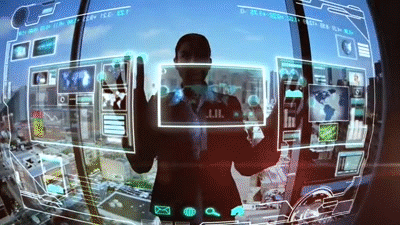Your company moved its office into your house – and you aren’t even getting paid for it

BY:
Lawyer Reporter
PROJECT COUNSEL MEDIA
9 March 2021 (Brussels, Belgium) – To me, “remote work” is a very bizarre phrase. It’s more like “HEY! I’m right here, wherever I am, working. You just moved your office into my house! And you aren’t even PAYING ME for it!!”
There are lots of issues to discuss about the post-pandemic future of the office which I will get to in a moment. But what is clear is “remote work” has shifted (for most) all the burden and none of the benefit to workers. And some of it is downright comical. One of the vendors we work with sent me a survey she received which was sent to everybody in her company from their HR department seeking tips on how to “help us get back to work” post-COVID. She said “I politely informed them that we never left work – we just left the corporate offices”.
There are two major factors worth considering here:
First, remote working pushes the costs of maintaining office space onto employees. Some companies do offer stipends for office technology and at-home setups, like chairs and upgraded Wi-Fi and large computer screens, but many employees end up shouldering the majority of these costs. We work with three industries: (1) cybersecurity, (2) digital technology/media, and (3) legal technology. In the first two, every company I polled offers stipends for upgraded office technology and improved at-home setups: office furniture, better Wi-Fi connections and larger computer screens, if requested. Among legal technology companies, almost none offered any stipends of any kind. A few did but only for mid-to-upper management. We must ask who benefits from the ostensible savings represented by home offices. For many employees—especially parents—working at home is much harder and sometimes more costly than working in an office.
NOTE: although Project Counsel Media maintains formal offices in Brussels and Paris, and a film studio in Rome, we have all been working remotely for 6+ years and we receive a significant stipend for keeping our office technology up-to-date, and improved at-home setups.
The second factor involves office dynamics. HR personnel have told me that there have been fewer opportunities for sexual harassment and other detrimental encounters between colleagues. Although working from home could be less safe for those facing domestic violence, many employees may find that it eases their interactions in the “office.”
COVID has caused companies to figure out how to balance what appears to be a lasting shift toward remote work with the value of the physical workplace. In the past three decades, a series of quiet revolutions in design have changed the way offices are used, erasing former hierarchies of walls and cubicles and incorporating workplace methodologies from the technology industry into team-based, open-plan layouts. At the same time, digital tools such as e-mail, Excel, Google Docs, video conferencing, virtual whiteboarding, and chat channels like Slack have made a worker’s presence in those offices less essential.
The pandemic has collapsed these divergent trends into an existential question: What’s an office for? Is it a place for newbies to learn from experienced colleagues? A way for bosses to oversee shirkers? A platform for collaboration? A source of friends and social life? A respite from the family? A reason to leave the house? It turns out that work, which is what the office was supposed to be for, is possible to do from somewhere else.
Before the pandemic, the physical and virtual workspaces often seemed to be at odds. The digital resources that now allow many workers to do their jobs from home had made it possible to come into the office and spend all day online. Although these tools claim to enhance the physical workspace by improving communication, they can undermine office culture by reducing the face-to-face encounters that open-plan layouts purport to promote. I was intrigued by a comment made by Satya Nadella, Microsoft’s CEO:
“Digital technology should not be a substitute for human connection. Digital technology should help human connection when there are constraints of space and time.”
Well, yes. But sometimes, of course, it is used for precisely that reason in open-plan offices – you can’t concentrate on your own work if someone next to you is talking, and there are few spaces in which to speak privately with a colleague.

During the first year of the pandemic, one of our largest cybersecurity clients conducted a series of surveys and workshops with all of its employees (about 2,200 people) around the world. The first one was simple: “Are you able to get any work done? Are your clients satisfied? How are you feeling?” Results were positive. Remote work was working, by and large. Thirty per cent of supervisors said that their workers were more productive at home; only seven per cent said people were getting less done. Two months into the pandemic, it seemed likely that working from home would be a permanent change, rather than a temporary stopgap.
The next set of surveys, conducted in July and August, asked, “Now that we are successfully working in a virtual world, what should the future post-COVID office look like, and how do you blend the physical and the digital in this new paradigm?” Everyone said that they missed seeing their colleagues in person, but very few workers envisaged returning to the office five days a week. One to three days was more appealing. People want to be able to work from anywhere, but there are times they want to collaborate. Instead of a big central office (they have one in NYC, one in Paris and one in Hong Kong) with seating for 1,200 employees and a two-hundred-person conference room (they have one in the NYC office), they thought it might be better to have smaller satellite offices nearer to workers’ homes.
Side note: their HR department referenced the “Dunbar’s number,” the British anthropologist Robin Dunbar’s theory, derived from studies of Neolithic villages and tribes, that humans can maintain stable social relationships with no more than a hundred and fifty people at any one time. The company opened a hub office in Brooklyn because so many of their New York people lived there, and in Versailles just outside of Paris for the same reason.
And the final set of surveys revealed some pain points. Completed in December 2020/January 2021 they showed:
1. Employees – driven by adrenaline and anxiety about underperforming, and because there wasn’t much else to do while sheltering in place – were working all the time.
2. There was a lack of spontaneous interactions with colleagues, difficulty integrating new hires into company culture remotely, Zoom fatigue, and ergonomically incorrect seating.
3. But the sorest was felt by staff who had young children. For a stressed-out parent, W.F.H. can quickly turn into W.T.F.!
4. But for many of the company’s employees, fewer opportunities for collaboration and the erosion of company culture weren’t major drawbacks. A summary of the survey results reported that conducting meetings over Zoom meant “more voices are being heard and there is better meeting etiquette.” One respondent wrote, “People tend to wait for others to finish their thoughts before speaking.” Another observed, “WFH actually forces our entire team to work more closely.”
5. And the survey also revealed that, without the company’s New York headquarters, and Paris and Hong Kong offices people who worked in other cities and countries felt much more involved. One worker wrote, “Paris has stopped acting like it’s Paris and everyone else.”

Finally, the survey asked the staff to imagine the office of the future. The most common responses:
• “More spaces for collaborating. Less individual desk space”
• “Would love to see more team-oriented spaces like a table, screen, and partial privacy that a team can use and have informal meetings instead of everything requiring a conference room”
• “The office can be very overwhelming and very hard to concentrate, that’s been the best part about working from home, being able to focus”
• “I feel very wary of big open floor plan spaces, which have always made it easy for bugs and viruses to travel.”
One of the common pain points in that final round was the fear that remote workers will lose out on opportunities that in-person workers get by virtue of proximity. Fifty-seven per cent of respondents thought that the stigma of working remotely would linger after the pandemic:
“When working from home people felt others saw them as unproductive, difficult to reach, and taking an unofficial day off. There is a lot of concern that when some return to the office, expectations and processes will shift back to favoring those who are physically present.”
The hybrid office sounds like a logical post-pandemic approach, and many companies are trying it, but mixing in-person and remote workers presents new challenges for managers. Harvard Business School just completed a study which concluded a hybrid setup is very hard to get right, and advises businesses to avoid it: stay all virtual; hybrid is likely to deliver the worst of both worlds.
Granted, a hybrid company still has substantial real-estate costs, and it also has to contend with the potentially serious threat to company culture posed by resentful remote workers who feel that they’ve been unfairly denied plum assignments and promotions. And what about all the people who return to work to discover that they no longer have a desk, and that the sweaters and photographs and other personal items they left behind have been packed up. As the Harvard research notes “People generally prefer a ‘home’ to a ‘hotel’ – in life and at work.”
The cybersecurity company I have noted who conducted all of those studies may not be a good example for many companies because its staff is young and very tech-savvy. Workers have been using tools like Zoom and other remote tools for years, so the company is not too worried about going hybrid. They have always had to manage a hybrid workforce before that term was even out there. This creates an opportunity to take that a little bit further. And that series of surveys helped to scope out potential divisions in the culture so they’ll be prepared to navigate them.

The technology industry gave birth to the modern office, and then created the tools to do without it. This paradox helps explain tech’s tortured history with remote work. By 2009, forty per cent of I.B.M.’s workforce was remote. The I.B.M. Smarter Workforce Institute promoted “telework” to clients as the future, claiming that remote workers “were highly engaged, more likely to consider their workplaces as innovative, happier about their job prospects and less stressed than their more traditional, office-bound colleagues.”
But in 2017, with profits falling, the company delivered an ultimatum: everyone must return to the office or leave the company. Likewise, Marissa Mayer, shortly after becoming the C.E.O. of Yahoo, in 2012, issued an edict to its twelve thousand employees banning W.F.H. Both companies cited diminished collaboration as a reason. (Mayer, a new mom at the time, built a “mother’s room” next to her office so that she could take the baby to work.) By 2016, about a third of Yahoo’s workforce had left. In 2017, Mayer herself departed the company, with two hundred and sixty million dollars.
With the onset of the pandemic, technology companies have once again become champions of remote work, while also expanding their real-estate portfolios. Facebook has said that it expects half its workforce to be remote by 2030. Twitter told its employees that they never have to return to the office. Microsoft plans to keep all but essential workers remote until this summer, but it is also proceeding with a multibillion-dollar renovation of its five-hundred-acre Redmond, Washington, campus. In August, R.E.I., the outdoor-equipment-and-clothing retailer, announced that it would not move into its four-hundred-thousand-square-foot headquarters in Bellevue, Washington. Facebook bought the complex in September for three hundred and sixty-eight million dollars. For Facebook, which has fifty-six thousand employees—more than four thousand of which were added during 2020—in eighty offices around the world, the former R.E.I. site represents a fraction of its future space needs, even if half its workers are remote in ten years.
Microsoft has traditionally had more of a wall-and-cubicle culture than younger tech businesses. The renovated Redmond digs will have fewer private offices and more team-based space. The company plans to start moving in by 2023.
The PC revolution “digitized” paperwork. Instead of physical pages and folders sitting on a desk, office workers had digital documents and files sitting on a virtual desktop inside a computer. But these digital desktops didn’t sit inside a virtual office, one in which you easily could move around among other desktops and meet in conference rooms or common areas. There was no virtual water cooler to facilitate serendipitous encounters.
The pandemic is accelerating a “second digital transformation”: the creation of a virtual cloud-based office that connects the desktops, where employees will go to work, whether they’re present in the physical office or working remotely. It sounds like the digital version of the open-plan-office revolution – the walls around the individual’s virtual desktop are coming down. And, once again, software engineers are leading the way.
To research this article I spoke with 15 HR personnel and 8 IT personnel involved in this “second digital transformation”. All pretty much said every company is going to need to invest in a digital workspace for each employee.
NOTE: one of our digital media clients noted they are building a custom office in the cloud, loaded with proprietary digital whiteboarding and visual-conferencing tools, which will transcend space and time. If you want to know what happened in the virtual office last Tuesday, you can go back and replay the meetings.
The privacy implications of the virtual office make the lack of personal space in the open-plan office seem quaint. As Eric De Grasse, our Chief Technology Officer, noted last year in a post about “employee tracking in the age of WFH”, companies are employing keystroke tracking in these virtual office so everything can be tracked. In the early 1990s key cards became ubiquitous which meant the company could know when you were in the building and when you weren’t. In a virtual workspace, it will know almost everything you do at work.
A worker bill of rights? In your dreams. Neither the new California Consumer Privacy Act (or its sister, the new Virginia Privacy Act) address any of these tech developments. Nor does Europe’s much revered new General Data Protection Regulation. All are quickly becoming “unfit for purpose”. No surprise, really. It always takes the law years to figure out how to ref the game – and then the goalposts move.
One big thing did keep popping up during my research and that was that it’s becoming clear socializing … IRL in some manifestation … is important to people’s productivity, as well as career outlook and development opportunities. Almost all workers seem to want to return to an office in the future, even if not full-time. Here at Project Counsel Media we still have our monthly team meetings on-site in the Brussels and Paris offices. It works wonders.
And what is even clearer … beyond continued job market uncertainty, benefits focused on child care and mental health, and the proliferation of sanitized plexiglass … is that the companies that are going to succeed at this transformation are the ones bringing in “a village” to determine what’s best: human resources advisers, workplace designers, technology experts, employment lawyers and compensation analysts. To bring back some “normalcy” while returning people to workplaces that may never be the same.

[…] hypocrisy of “remote work”. And the pain points.: And this post from Angela Gambetta at Project Counsel Media, which discusses some of the pitfalls of working from […]